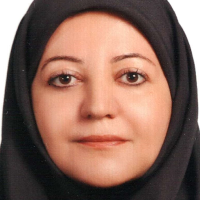In Vitro Effects of Ketotifen and Cromolyn Sodium on Promastigotes and Amastigotes of Leishmania major
Author(s):
Article Type:
Research/Original Article (دارای رتبه معتبر)
Abstract:
Background
The first line treatment against cutaneous leishmaniasis is meglumine antimoniate. This drug is expensive and has serious side effects, including development of drug resistance.
Objectives
In this research, because of paucity of information, the apoptotic and leishmanicidal effects of ketotifen and cromolyn sodium, as cell membrane stabilizer drugs, were investigated on standard strain of Leishmania major.
Methods
In this experimental study, L. major parasites were first cultured in RPM1 1640 media, supplemented with 10% fetal bovine serum (FBS) and antibiotics at 24 ± 1ºC. Drug concentrations of 5, 10, 15, and 20 µg/mL were then added to L. major culture at 24-, 48- and 72-hour intervals. The 3 - (4,5-dimethylthiazol-2-yl) -2,5-diphenyltetrazolium bromide (MTT) tetrazolium assays were performed to determine parasite viability and drug toxicity. Leishmania major promastigotes were augmented to the in vitro cultured macrophages (J774 cells) and then incubated for 72 hours. Half maximal inhibitory concentration (IC50) were ascertained by counting the parasites. The inhibitory effect of the drugs were compared with that of glucantime. Flow cytometry was performed in the next step, to evaluate apoptosis. Each test was repeated three times.
Results
IC50 values of ketotifen and cromolyn sodium after 72 hours were calculated to be 2.04 and 17.67 µg/mL for promastigotes and 0.12 and 14.79 µg/mL for amastigotes, respectively. The results of MTT assays showed 20% and 35% promastigote viability after 72 hours of exposure to ketotifen and cromolyn sodium at 20 µg/mL concentration. Apoptosis in ketotifen and cromolyn sodium was quantified to be 11.52% and 9.96% in promastigotes and 99.5% and 98.6% in amastigote-infected macrophages, respectively. The results indicated that the drugs induce early and late apoptosis in parasites. All treatments produced results, which differed significantly from the control groups (P < 0.05).
Conclusions
Drugs used in this study, especially Ketotifen, showed lower toxicity yet similar anti-leishmanial effects on both forms, as cromolyn sodium did. It could be suggested that further investigations about the in vivo effects of these drugs, as candidates for cutaneous leishmaniasis treatment, are required.Keywords:
Ketotifen , Cromolyn sodium , MTT , Apoptosis , IC50
Language:
English
Published:
Jundishapur Journal of Microbiology, Volume:12 Issue: 1, Jan 2019
Page:
6
magiran.com/p1932152
دانلود و مطالعه متن این مقاله با یکی از روشهای زیر امکان پذیر است:
اشتراک شخصی
با عضویت و پرداخت آنلاین حق اشتراک یکساله به مبلغ 1,390,000ريال میتوانید 70 عنوان مطلب دانلود کنید!
اشتراک سازمانی
به کتابخانه دانشگاه یا محل کار خود پیشنهاد کنید تا اشتراک سازمانی این پایگاه را برای دسترسی نامحدود همه کاربران به متن مطالب تهیه نمایند!
توجه!
- حق عضویت دریافتی صرف حمایت از نشریات عضو و نگهداری، تکمیل و توسعه مگیران میشود.
- پرداخت حق اشتراک و دانلود مقالات اجازه بازنشر آن در سایر رسانههای چاپی و دیجیتال را به کاربر نمیدهد.
In order to view content subscription is required
Personal subscription
Subscribe magiran.com for 70 € euros via PayPal and download 70 articles during a year.
Organization subscription
Please contact us to subscribe your university or library for unlimited access!



